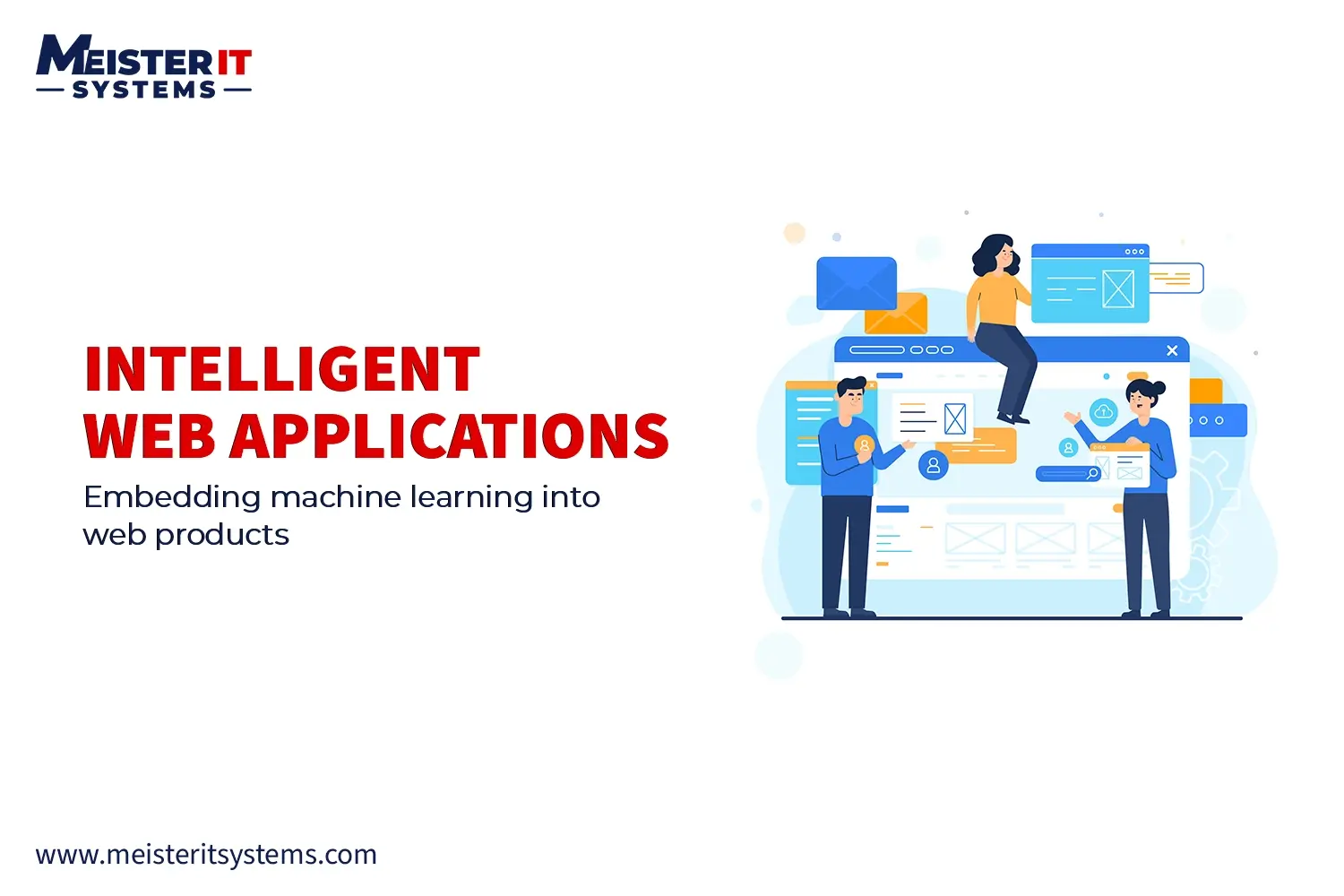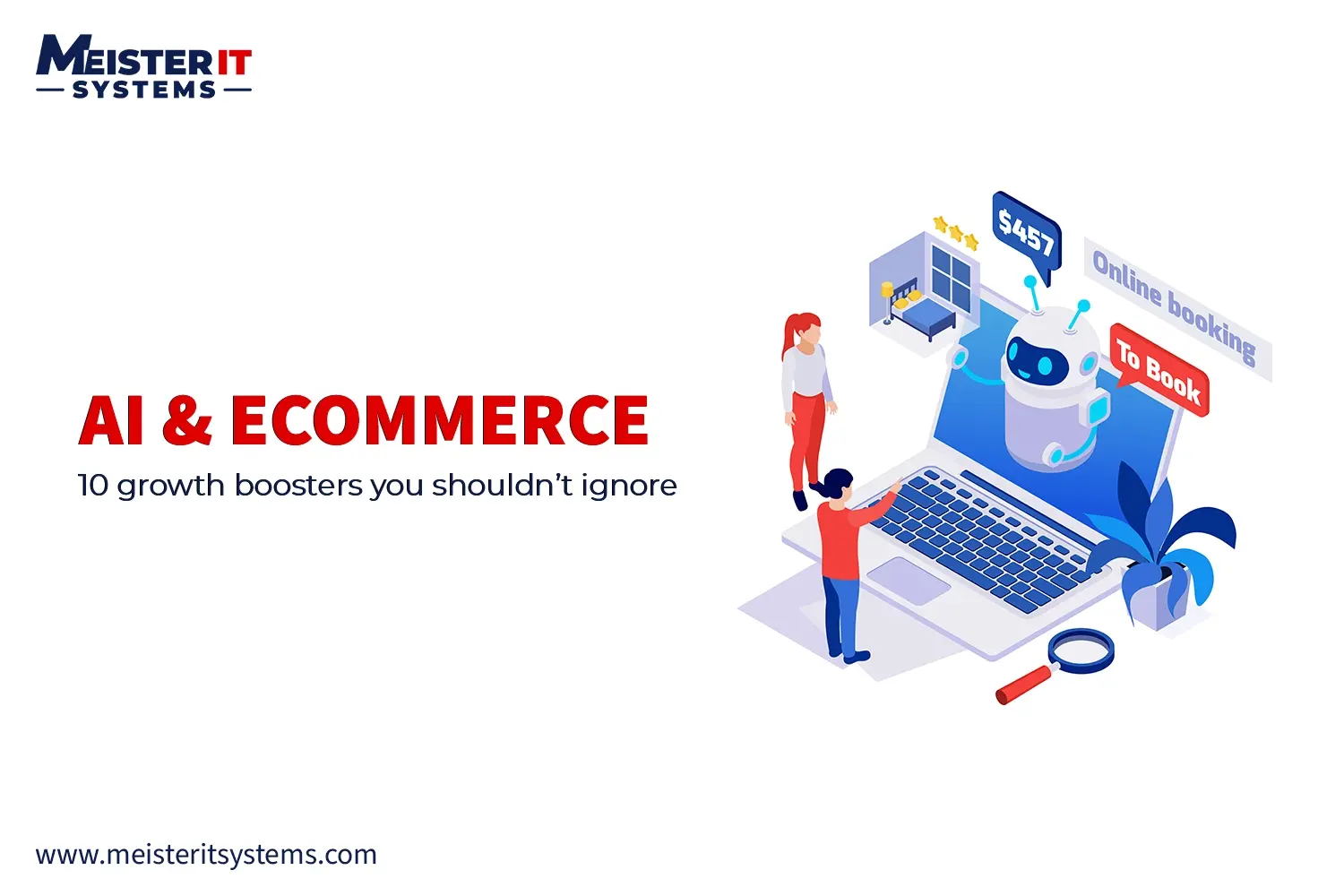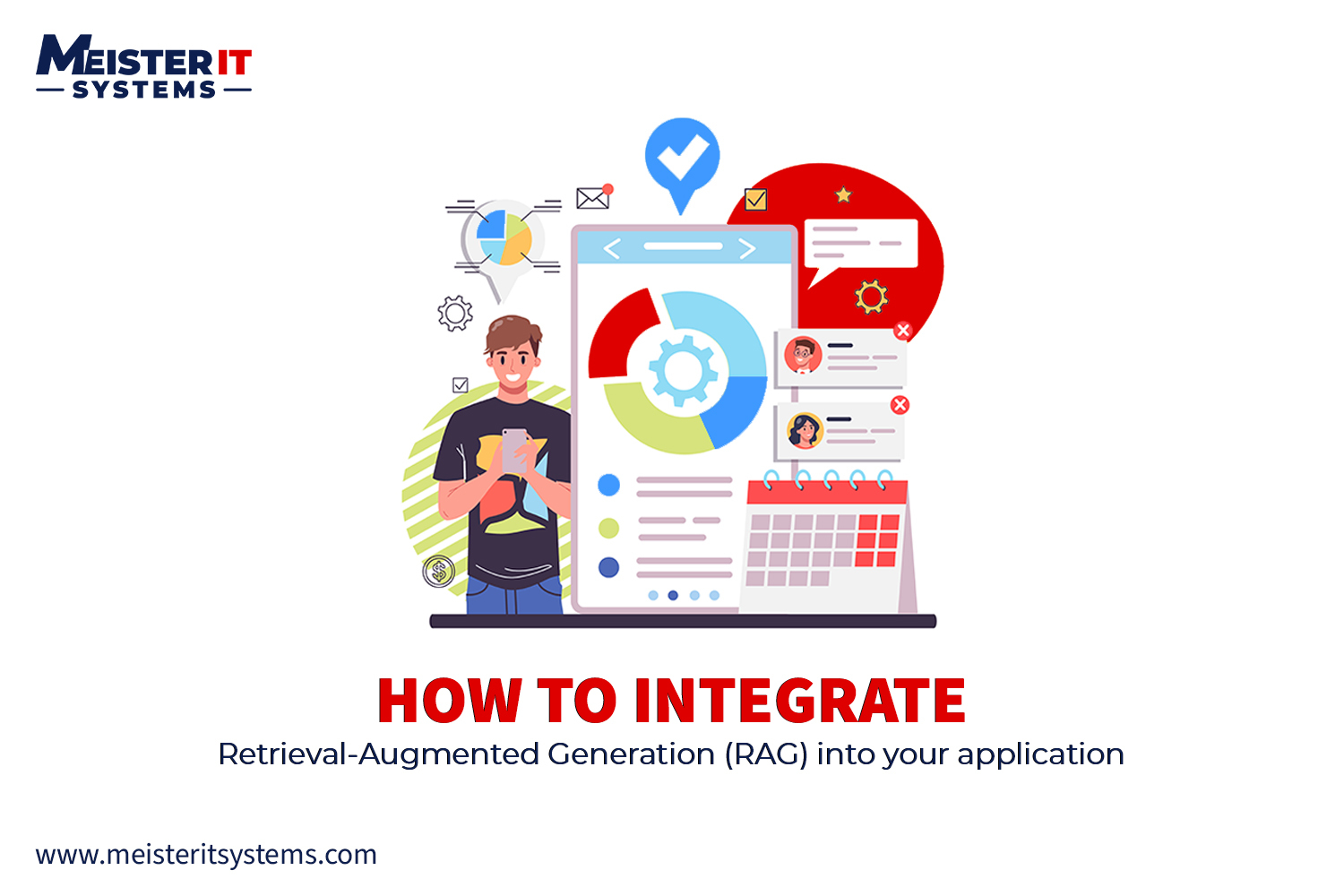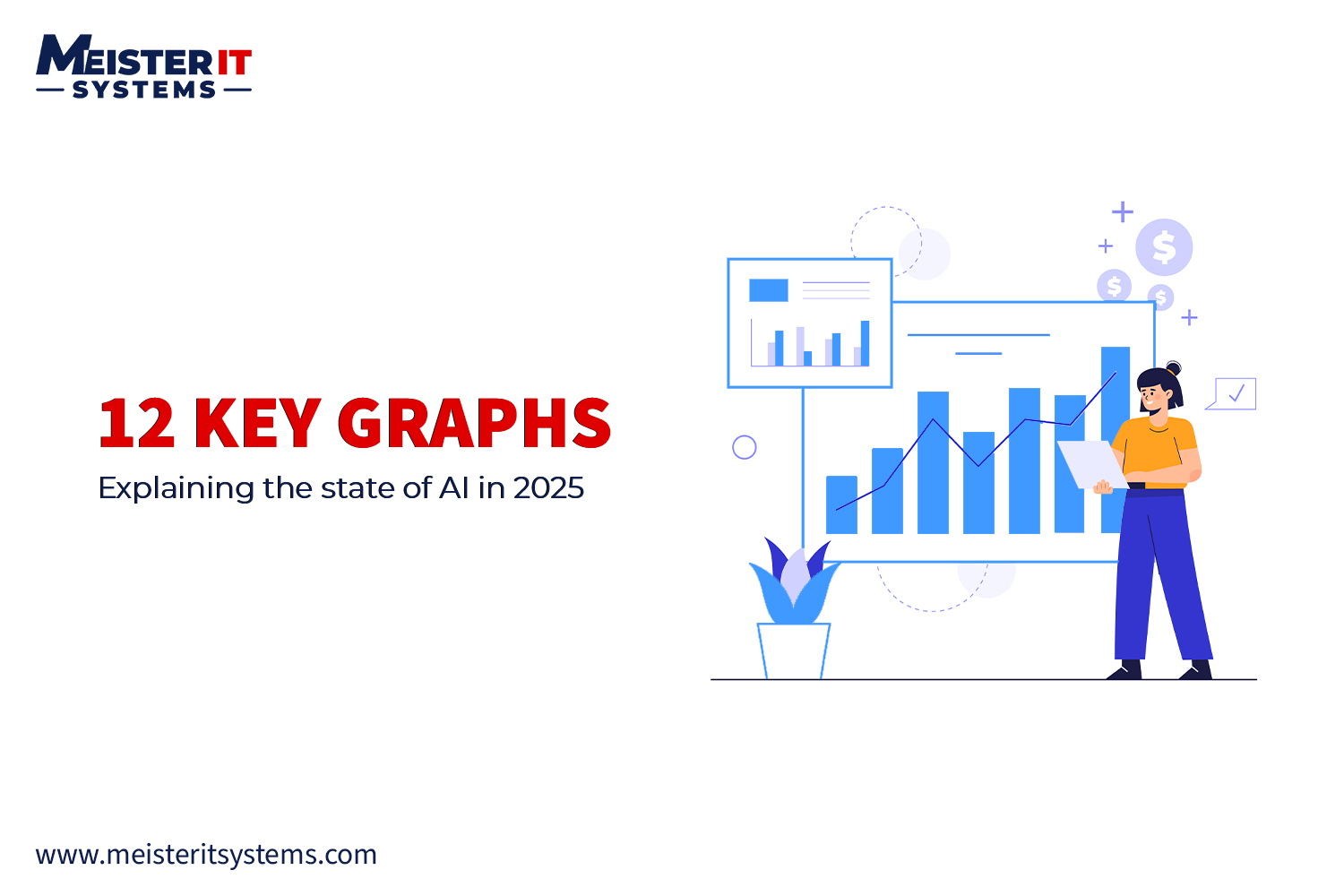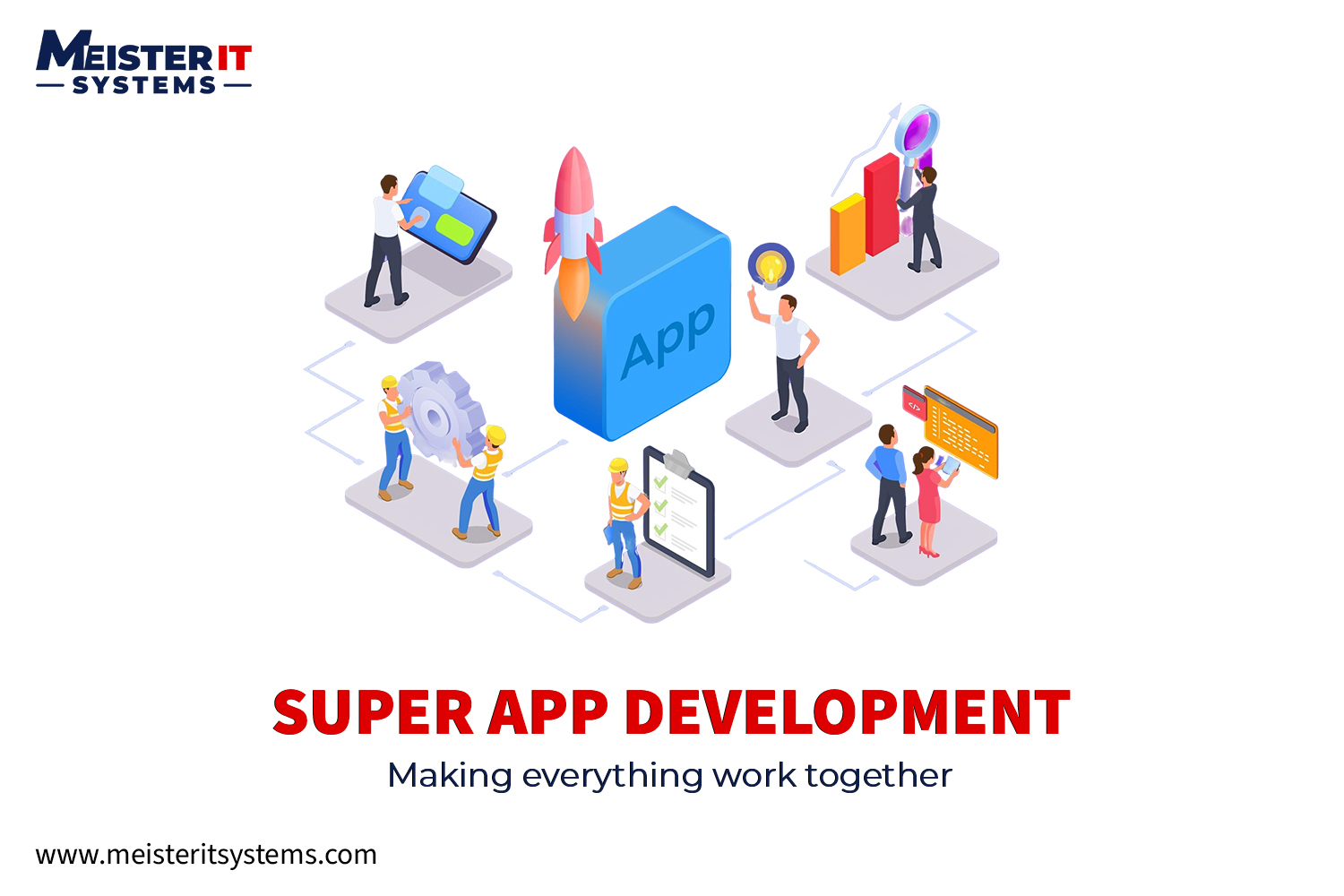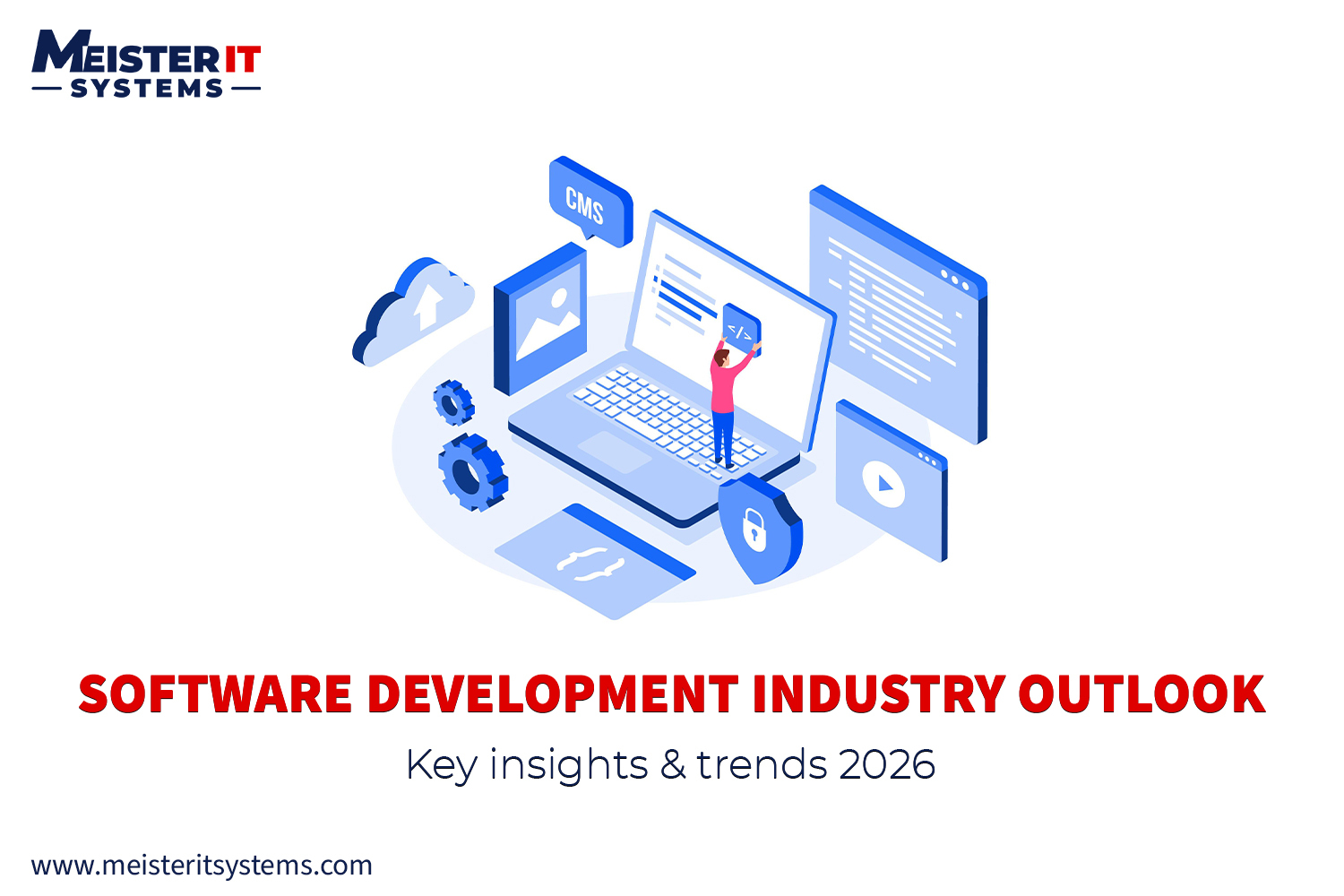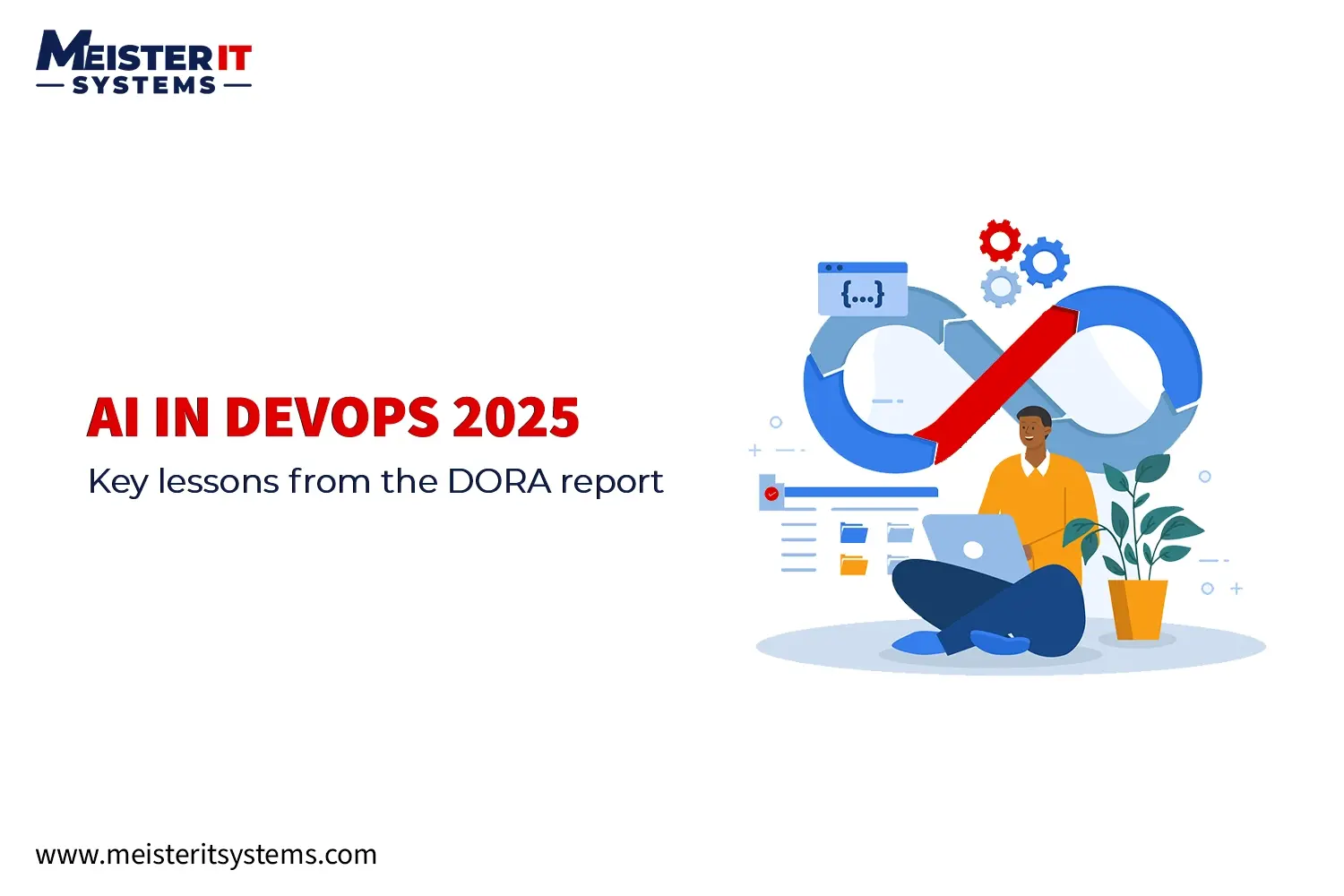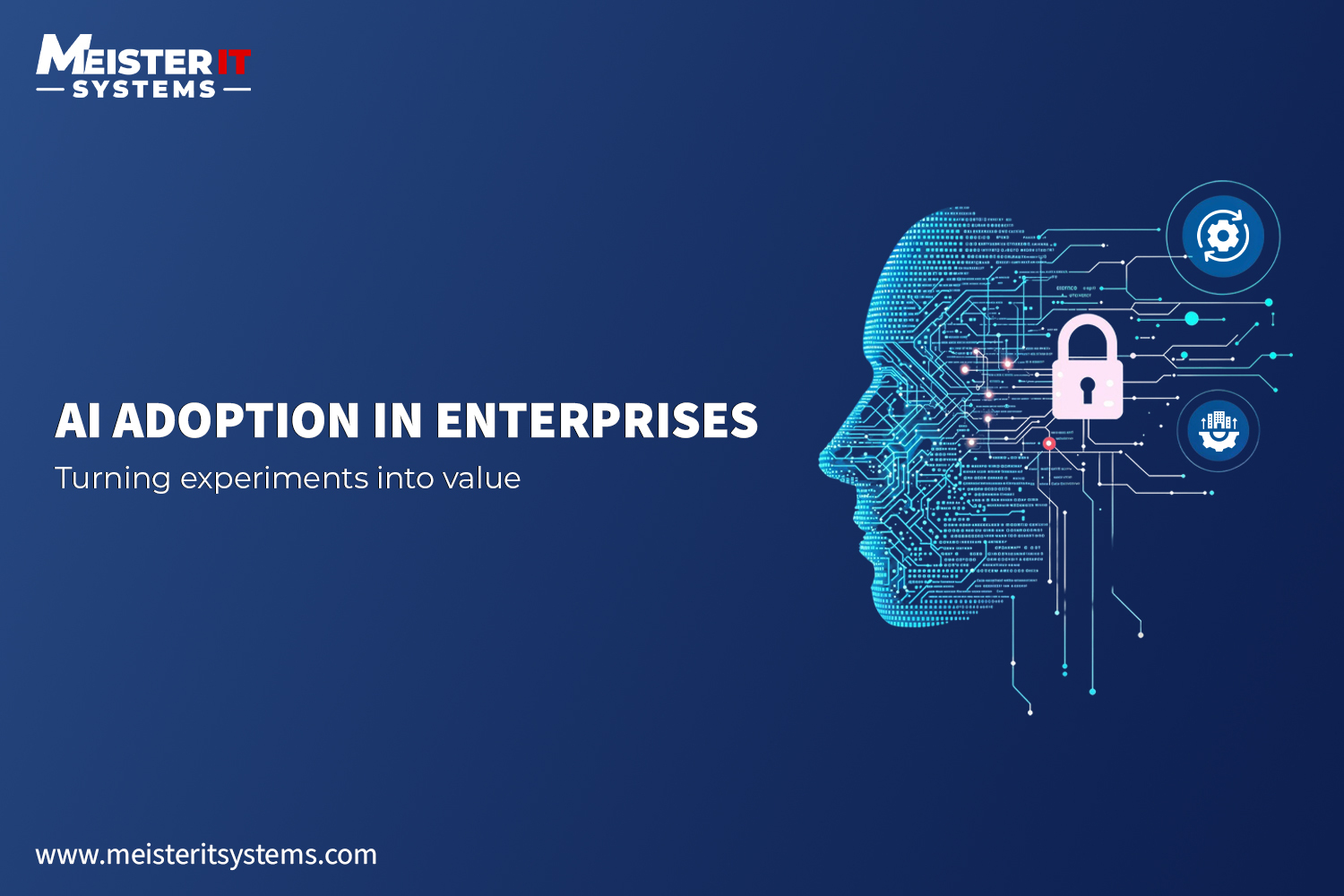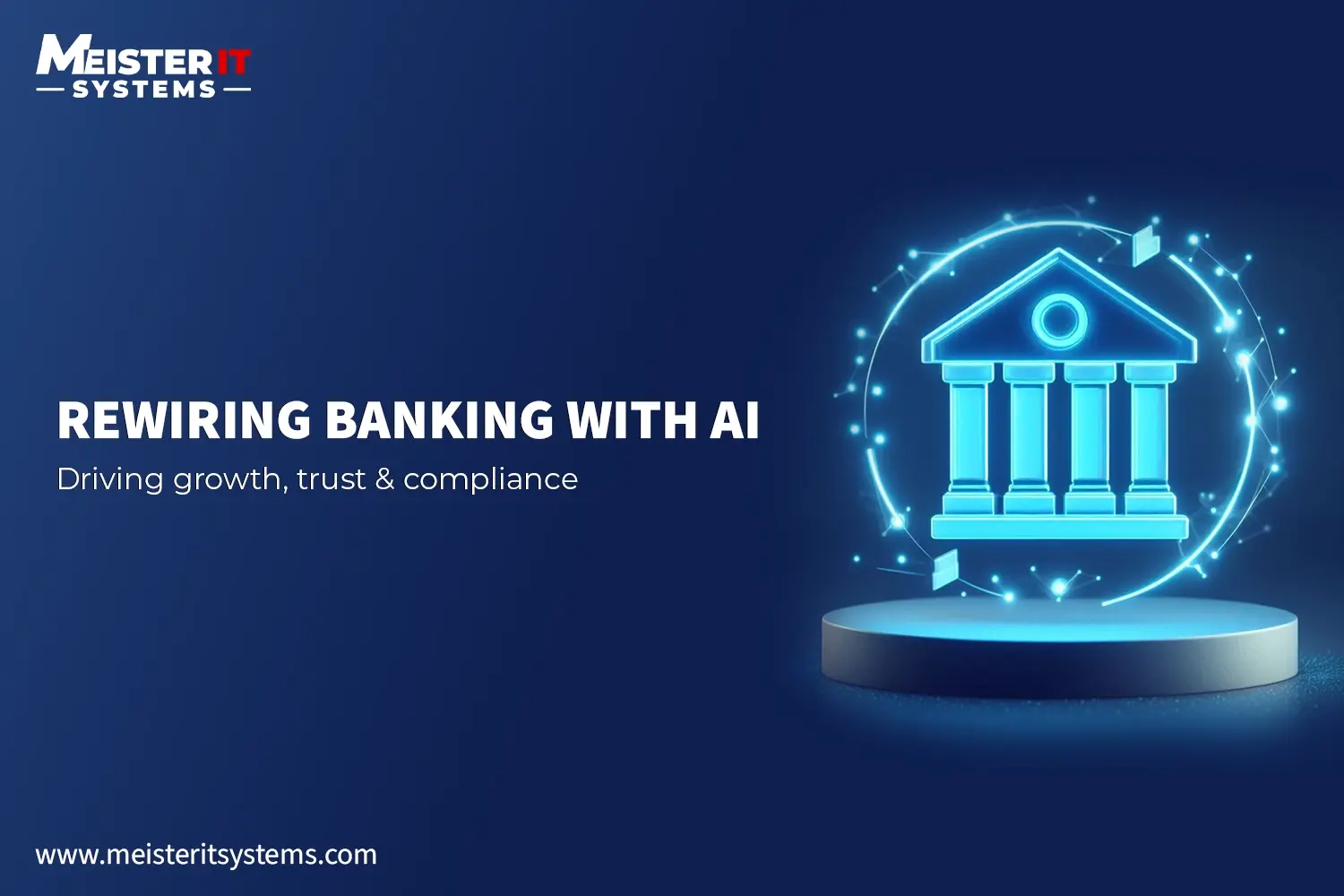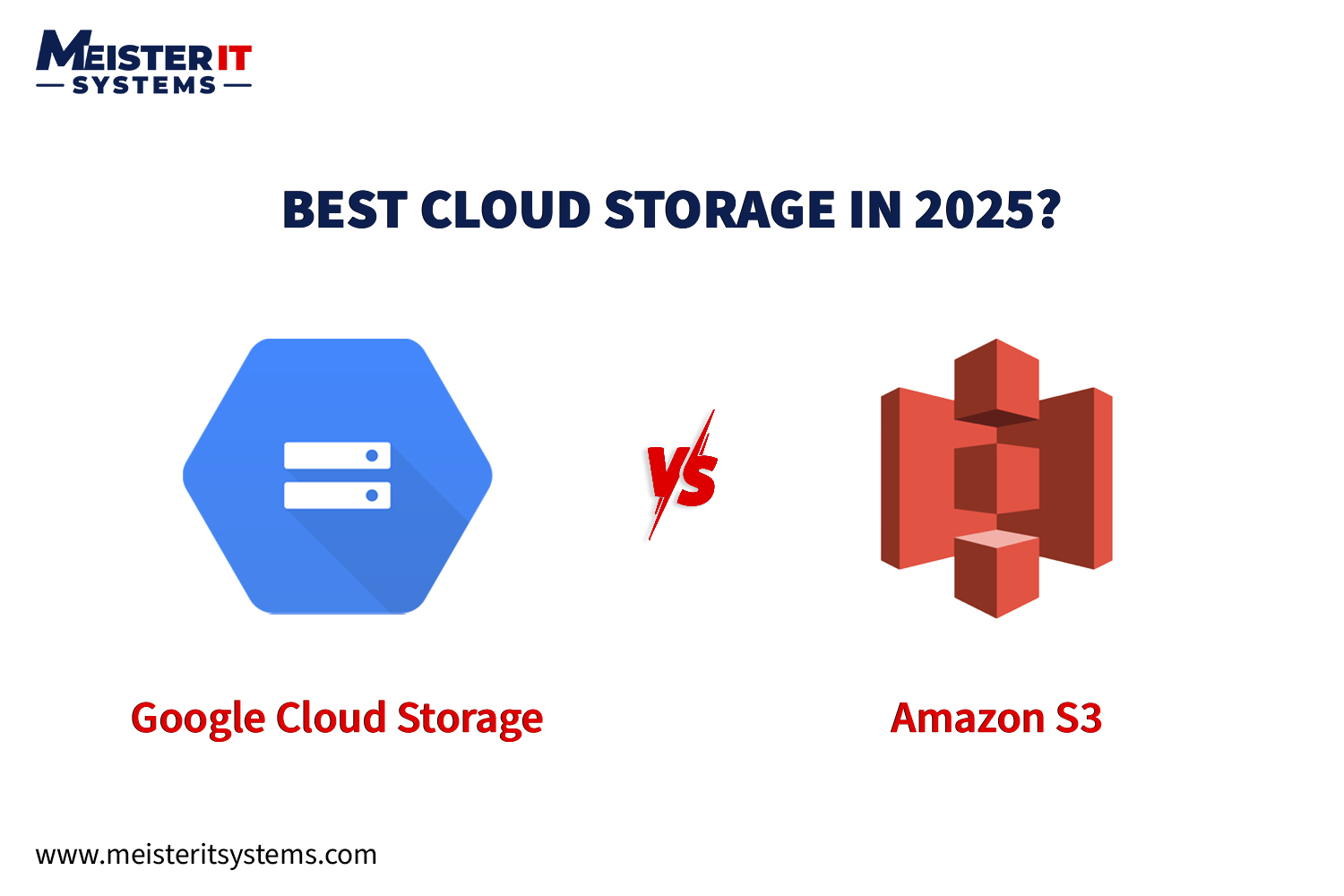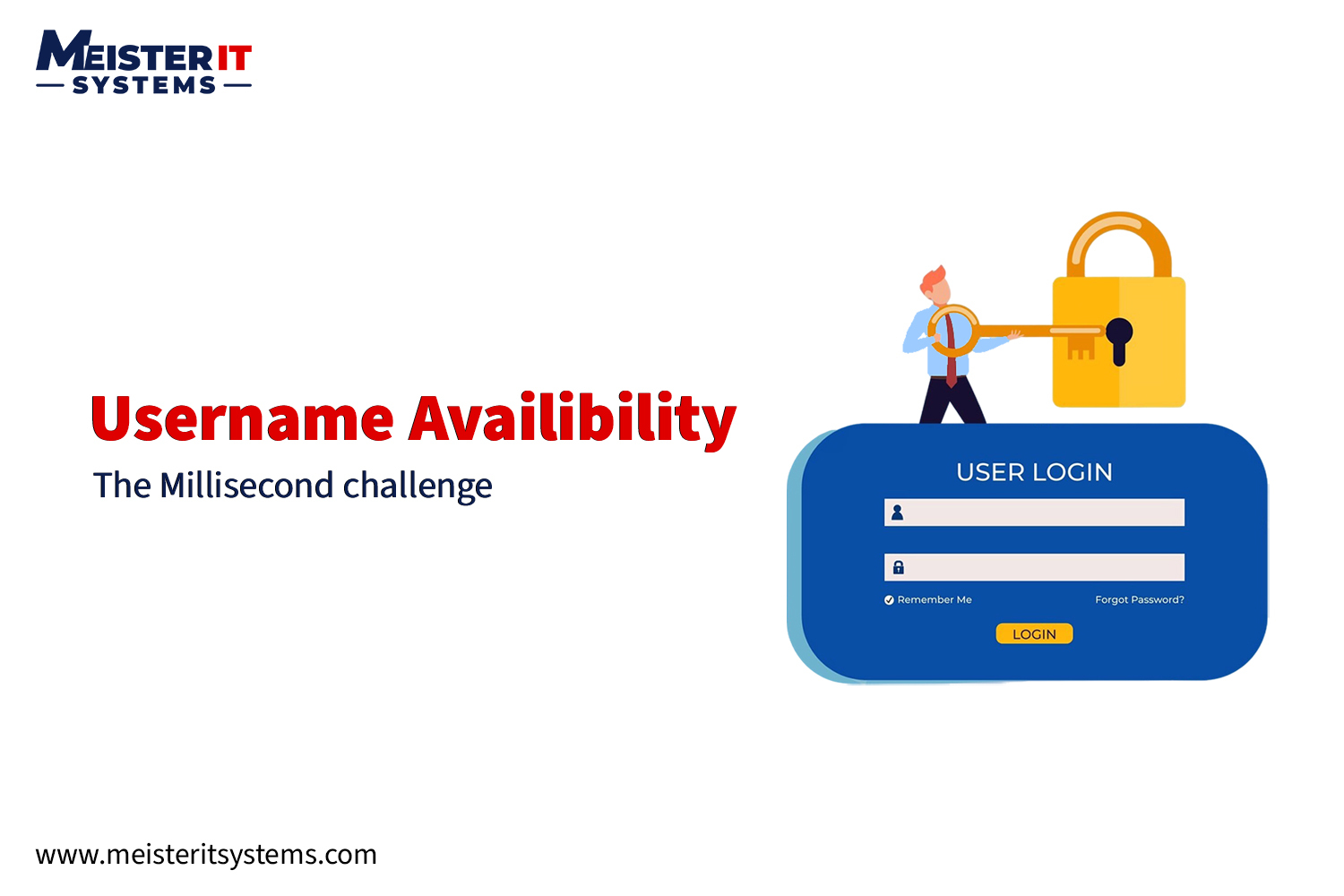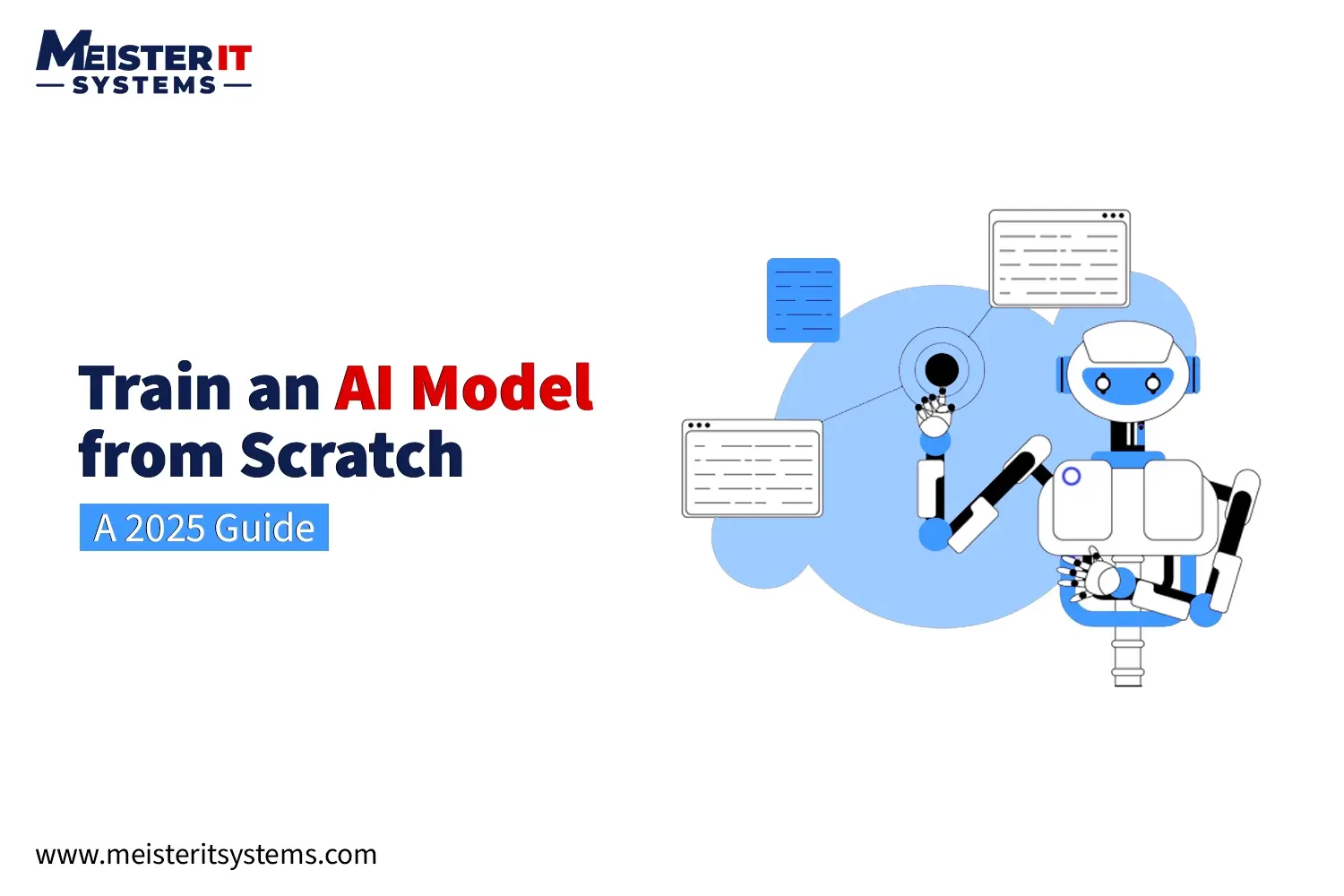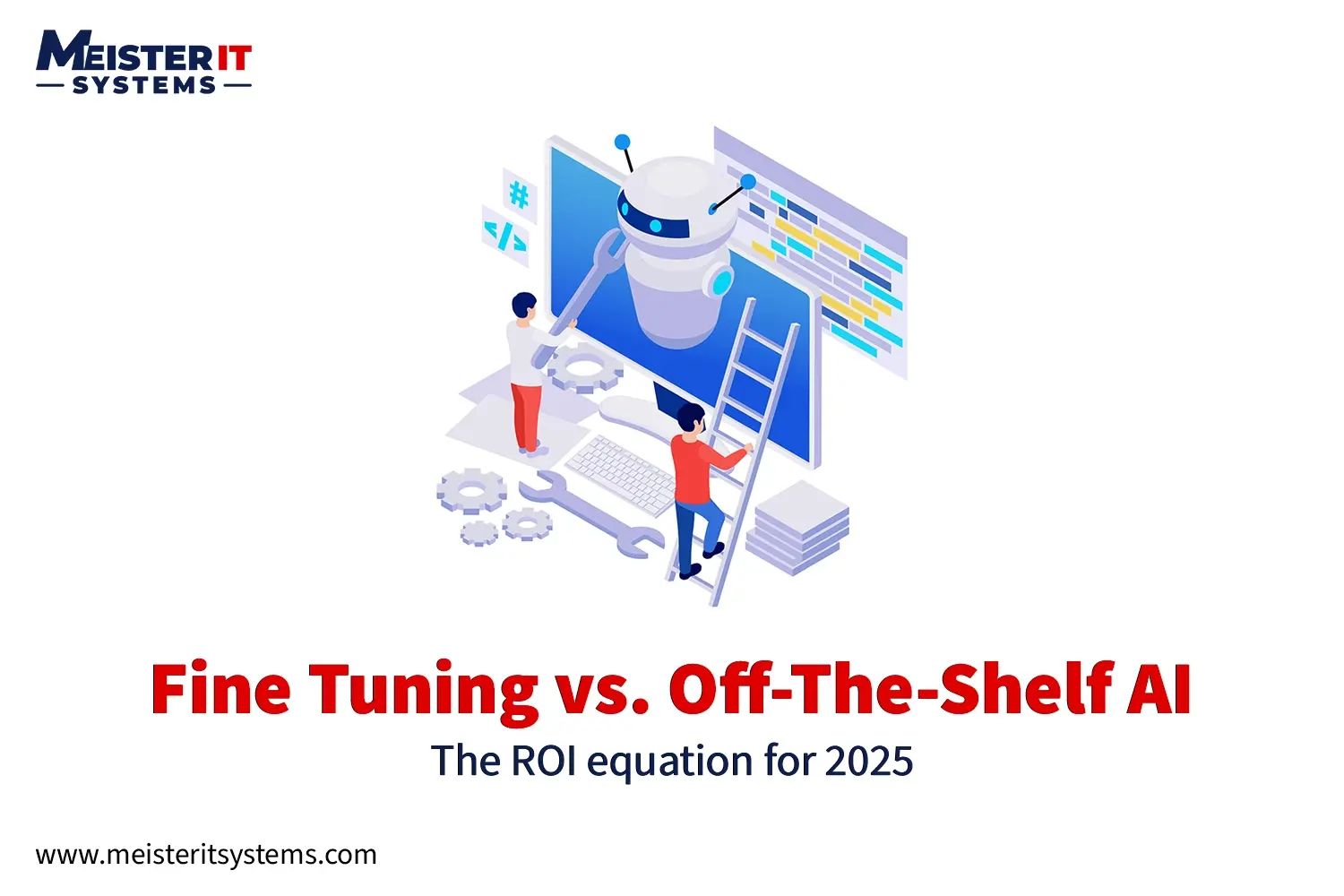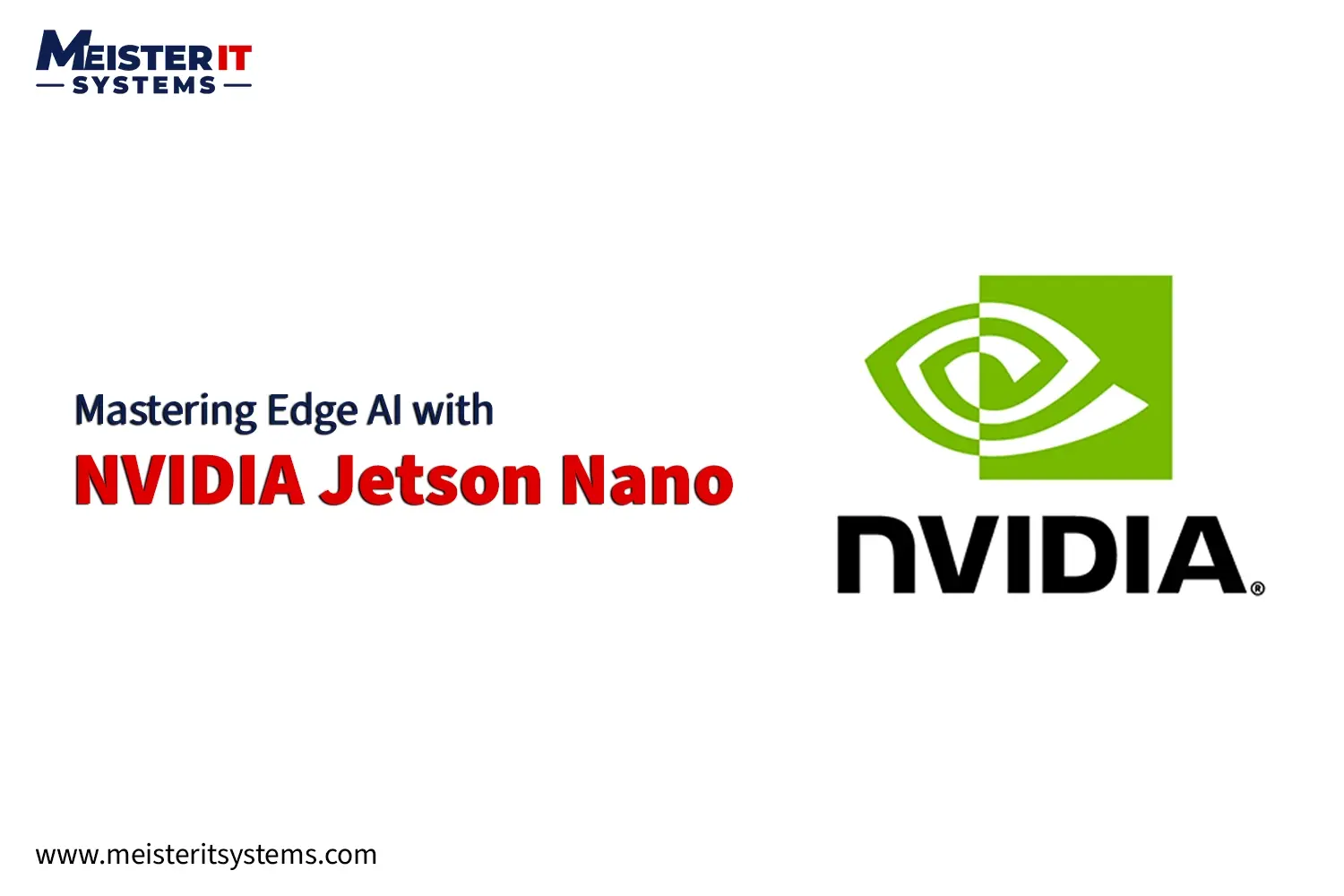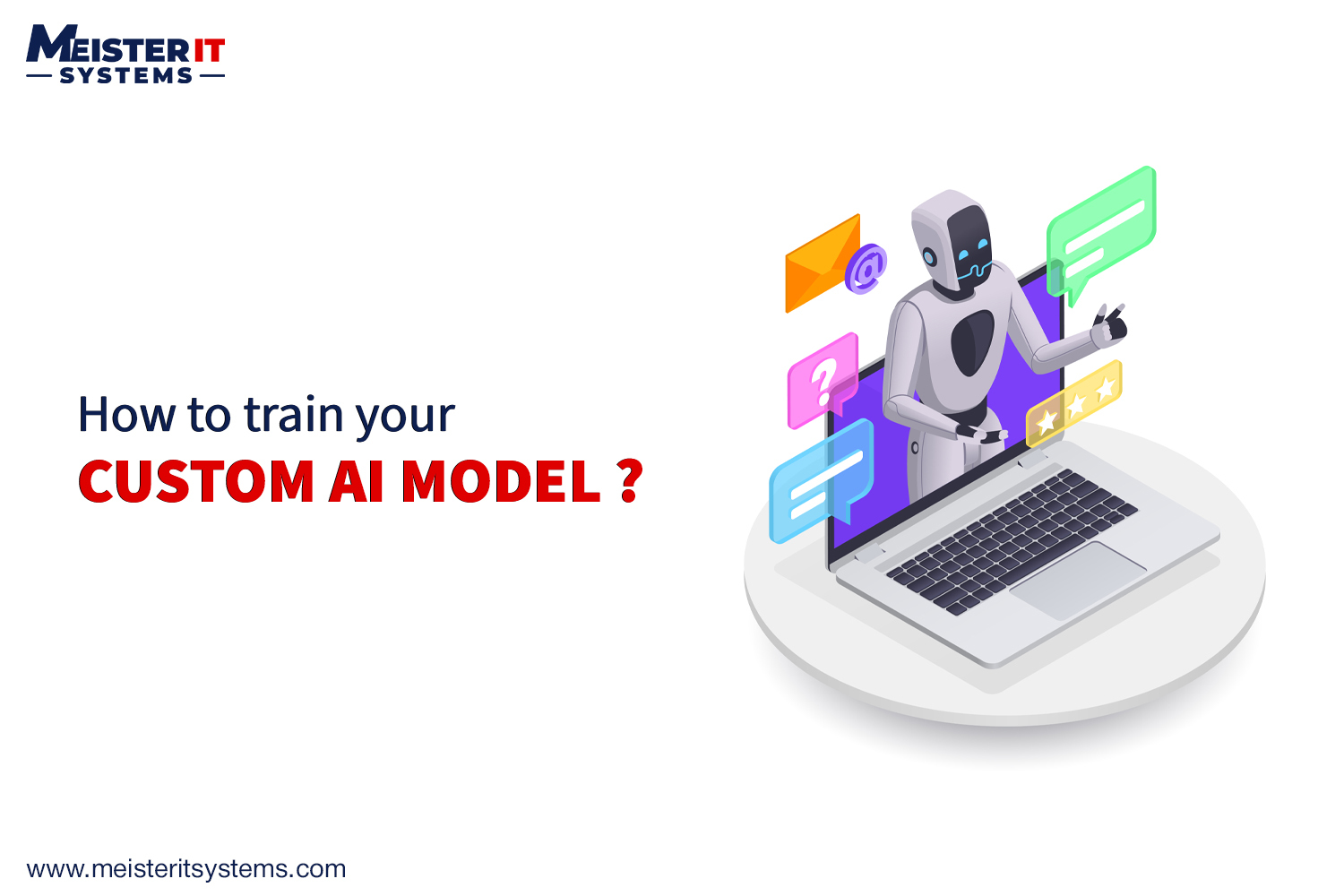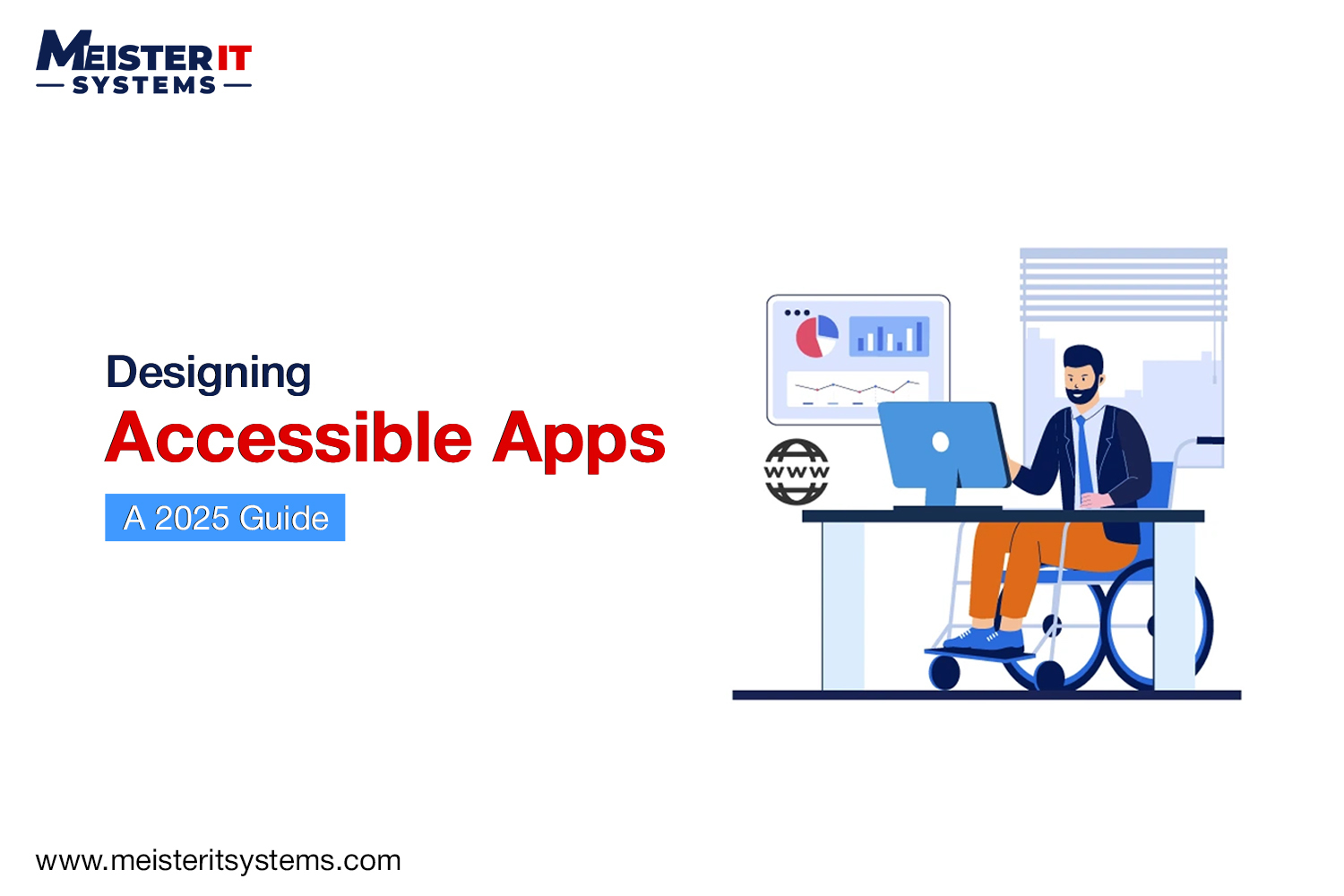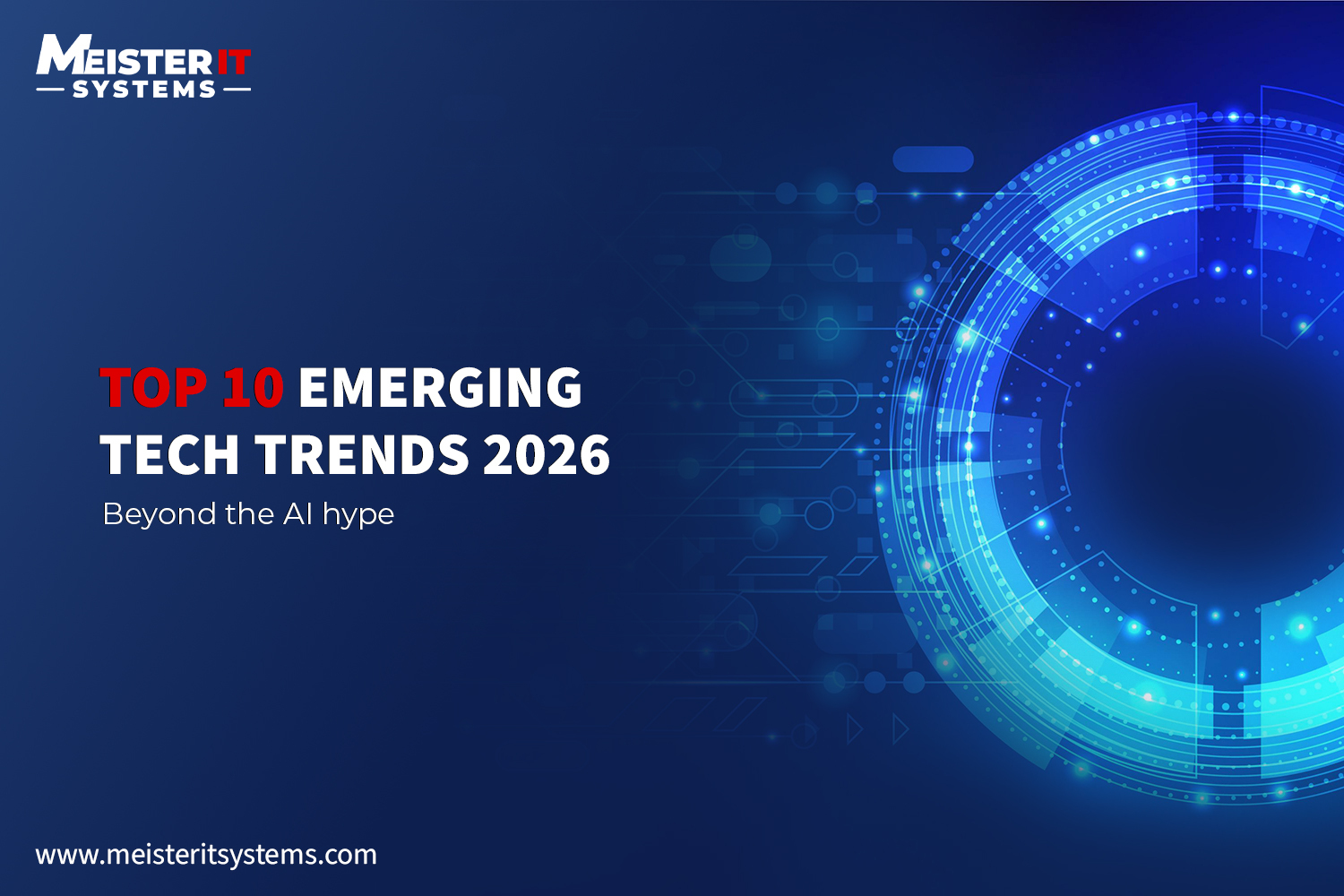
Key Takeaways
- AI adoption is entering a new phase focused on trust and accountability.
- Secure, compliant infrastructure is now a competitive advantage.
- Domain-specific and multi-agent AI will shape real-world impact.
- Enterprises that act early will lead the next AI growth cycle.
Introduction
AI is entering a new chapter where size and speed no longer define success. The focus has shifted to building systems that are trustworthy, secure, and transparent. Businesses now want AI that not only performs well but also safeguards data, ensures compliance, and earns user confidence.
At MeisterIT Systems, we see this change firsthand. Organizations are moving toward AI-native platforms, confidential computing, and domain-specific models that combine intelligence with accountability. These shifts are shaping the next generation of enterprise innovation.
Let’s explore the top 10 emerging tech trends of 2026.
1. AI-Native Development Platforms
AI is moving from experimental tools to core systems. AI-native platforms are development environments designed specifically for AI applications, consolidating training, deployment, and monitoring in a single location.
Why it matters:
- Reduces friction between data scientists and developers.
- Simplifies tracking of performance, cost, and accuracy.
- Speeds up time from prototype to production.
If your team still works across disconnected tools, it’s time to consolidate. Adopting an AI-native environment helps your developers iterate faster, maintain consistency, and reduce deployment errors.
2. AI Supercomputing Platforms
Training large models requires massive computing power. AI supercomputing platforms are designed to handle those workloads efficiently, combining high-performance GPUs, TPUs, and distributed processing.
Why it matters:
- Keeps up with the growing complexity of large models.
- Improves training speed and reduces cost per run.
- Supports enterprise-scale AI without infrastructure limits.
Revisit your compute strategy. Compare public, hybrid, and private cloud options to find the right balance between performance and budget.
3. Confidential Computing
AI now processes more sensitive data than ever. Confidential computing protects that data while it’s being used, not just when stored or transmitted.
Why it matters:
- Keeps data private even inside shared or cloud environments.
- Reduces risk in regulated industries such as healthcare and finance.
- Builds trust and compliance readiness.
If your AI workflows rely on sensitive information, integrate confidential computing now. It’s quickly becoming a standard requirement in both the US and UK markets.
4. Multi-agent Systems
Instead of one model doing one job, multi-agent systems use several AI agents that work together toward a shared goal. Each agent specializes in a specific task and communicates with others to complete complex processes.
Why it matters:
- Automates decision-making across multiple steps.
- Improves speed and accuracy of operations.
- Creates intelligent workflows that adapt in real time.
Start by testing single-purpose agents. Once performance is stable, connect them into coordinated systems. Keep human review until outcomes are consistent and reliable.
5. Domain-Specific Language Models (DSLMs)
Generic AI models are useful, but they lack deep context. DSLMs are trained for specific industries or business functions, delivering higher accuracy and compliance.
Why it matters:
- Reduces irrelevant or incorrect outputs.
- Aligns with industry language, data, and rules.
- Improves ROI from smaller, specialized models.
Use your proprietary data to train or fine-tune domain-specific models. A well-trained smaller model can outperform a large general one when it’s built for your exact business environment.
6. Physical AI
AI is leaving the screen and entering the physical world through robots, drones, and smart devices. Physical AI connects digital intelligence to real-world operations.
Why it matters:
- Enhances automation in manufacturing, logistics, and maintenance.
- Improves safety and productivity through data-driven movement.
- Powers predictive maintenance and real-time control.
Simulate before deployment. Use digital twins and connected sensors to monitor and refine AI behavior. Scale gradually with measurable business results.
7. Preemptive Cybersecurity
Traditional security reacts to threats after they occur. Preemptive cybersecurity uses AI to detect and prevent them before they reach your systems.
Why it matters:
- Protects against advanced threats like data poisoning or model theft.
- Uses predictive analytics to spot unusual activity.
- Minimizes downtime and recovery costs.
Integrate AI-driven threat detection into your DevSecOps pipeline. Regularly test your systems with simulated attacks and strengthen defense based on results.
8. Digital Provenance
With AI-generated data spreading rapidly, trust and verification are becoming major challenges. Digital provenance tracks where data, content, and models come from.
Why it matters:
- Builds transparency across AI systems.
- Protects brands from misinformation and fake content.
- Simplifies audits and compliance checks.
Add data lineage tools to your governance framework. Use immutable records or blockchain-based systems to verify the source and history of your data.
9. AI Security Platforms
AI systems need their own protection layer. AI security platforms monitor, test, and safeguard models from attack or misuse.
Why it matters:
- Prevents bias injection, data leaks, or unauthorized access.
- Tracks model changes and deployment behavior.
- Strengthens regulatory and ethical compliance.
Choose tools that integrate directly with your MLOps stack. You should always know who trained a model, what data was used, and how it performs over time.
10. Geopatriation
Data sovereignty is now a boardroom issue. Geopatriation means ensuring that your data and AI systems are stored and processed within specific national or regional boundaries.
Why it matters:
- Complies with US, UK, and EU data residency laws.
- Reduces the risk of cross-border data disputes.
- Builds user and regulator trust.
Audit your current data locations. Update contracts with cloud vendors to ensure regional compliance and long-term governance alignment.
Connecting the Trends
Tech trends 2026 show that the next phase of AI growth will depend on trust, control, and collaboration. Having powerful models is not enough. Enterprises now need systems that are secure, transparent, and well-integrated.
For technology leaders, this means focusing on four priorities:
- Strengthen data privacy and AI security.
- Invest in domain-specific and compliant AI systems.
- Simplify AI development and deployment through native platforms.
- Align infrastructure and policies with regional regulations.
The companies that get this right will not only move faster but will also earn lasting trust from customers, regulators, and partners.
How MeisterIT Systems can help you
At MeisterIT Systems, we help enterprises turn insights like these into practical strategies. Our team works with CTOs and tech leaders to design, build, and manage AI-ready infrastructures that meet both performance and compliance goals.
Our expertise covers:
- AI integration and custom model development
- Confidential computing and enterprise-grade security
- AI-ready infrastructure and DevOps
- Data governance and compliance
We help you build technology that performs today and scales for tomorrow.
Conclusion
Tech trends for 2026 make one thing clear: the next chapter of AI belongs to companies that prioritise trust, security, and thoughtful adoption. AI growth won’t come from chasing hype but from building systems that can be trusted at scale. MeisterIT Systems helps CTOs and enterprises design AI strategies that are secure, scalable, and built for impact.
Contact us today to build an AI-ready business that leads, adapts, and grows with confidence.
FAQs: Your Questions Answered
Q1: What are the top emerging tech trends for 2026?
A1: The biggest trends include AI-native platforms, confidential computing, multi-agent systems, domain-specific AI models, AI security platforms, and preemptive cybersecurity. All focus on building trusted, secure, and compliant AI systems.
Q2: Why is trust so important in AI now?
A2: AI is used in critical business and social decisions. Trust ensures that models are transparent, secure, and compliant, protecting data, users, and brand reputation.
Q3: What is confidential computing in AI?
A3: It is a security approach that protects data while it is being processed, not only when it is stored. This helps enterprises use sensitive information safely, even in shared or cloud environments.
Q4: How are multi-agent AI systems changing automation?
A4: Instead of one model handling every task, multiple AI agents work together, each focusing on a specific function. This improves efficiency, accuracy, and scalability in enterprise operations.
Q5: How can enterprises get ready for these tech trends?
A5: Start by auditing your current data, infrastructure, and AI workflows. Invest in secure platforms, domain-specific models, and governance tools that align with regional compliance requirements.



